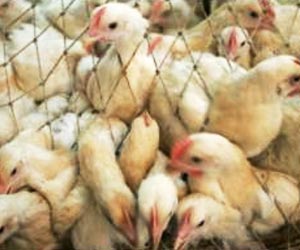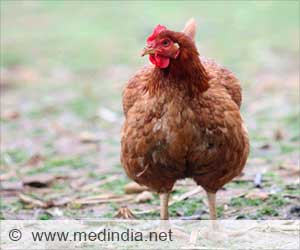A team of scientists have reported that preparing vaccines and therapeutics that target a future mutant strain of H5N1 influenza virus may be possible now.
A team of scientists have reported that preparing vaccines and therapeutics that target a future mutant strain of H5N1 influenza virus may be possible now.
In a new study, researchers at the National Institute of Allergy and Infectious Diseases (NIAID), have claimed that that they have developed a strategy to make vaccines and therapeutic antibodies that could target predicted H5N1 mutants before these viruses evolve naturally.This progress was made achievable by creating mutations in the region of the H5N1 hemagglutinin (HA) protein that directs the virus to bird or human cells and eliciting antibodies to it.
"What Dr. Nabel and his colleagues have discovered will help to prepare for a future threat. While nobody knows if and when H5N1 will jump from birds to humans, they have come up with a way to anticipate how that jump might occur and ways to respond to it," says NIH Director Elias A. Zerhouni, M.D.
In another statement NIAID Director Anthony S. Fauci, M.D. says, "Now we can begin, pre-emptively, to consider the design of potential new vaccines and therapeutic antibodies to treat people who may someday be infected with future emerging avian influenza virus mutants. This research could possibly help to contain a pandemic early on."
Influenza viruses constantly mutate, however, and vaccines are most effective against the highly specific strains that they are made from. This makes it hard to predict how effective a vaccine made today will be against a virus that emerges tomorrow.
Dr. Nabel and his colleagues started their project by focusing narrowly on mutations that render H5N1 viruses better able to identify and enter human cells.
Advertisement
Additionally, they found that these mutations change how the immune system recognizes the virus. Mouse antibodies that target H5N1 were up to tenfold less potent against the mutants. Dr. Nabel and his colleagues used their knowledge of receptor specificity to produce vaccines and segregate new antibodies that might be used therapeutically against human-adapted mutants.
Advertisement
According to Dr. Nabel, their findings should contribute to better surveillance of naturally occurring avian flu outbreaks by making it easier to recognize dangerous mutants and identify vaccine candidates that might provide greater efficacy against such a virus before it emerges.
"Our findings build on elegant studies of the influenza HA protein by structural biologists. Insight into the structure of the avian flu virus has enabled us to target a critical region of HA that directs its specificity. Such a structure-based vaccine design may allow us to respond to this future threat in advance of an actual outbreak," notes Dr. Nabel.
Source-ANI
LIN/J






